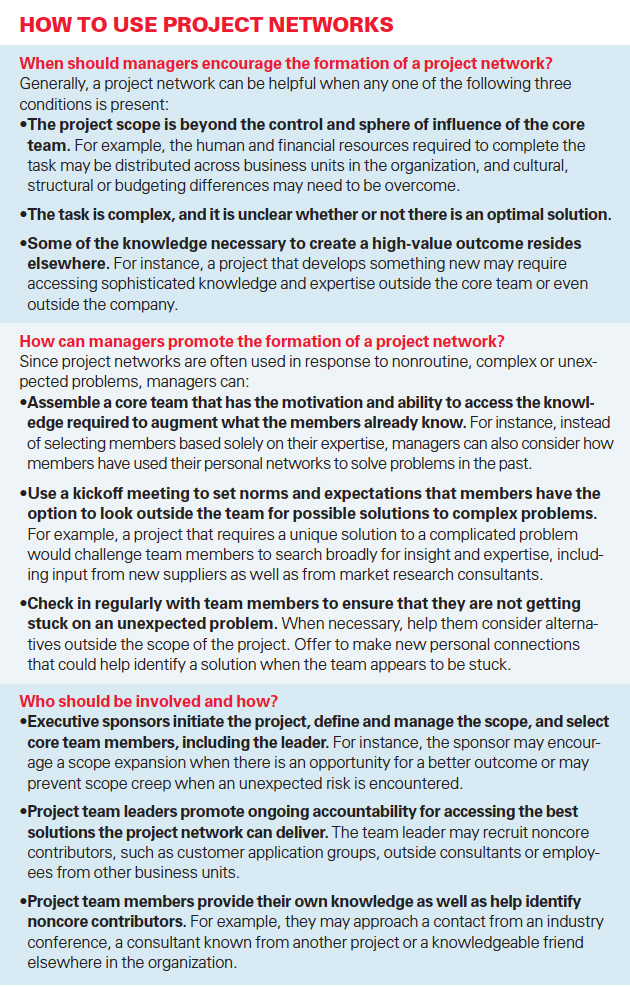As we know, R&D is focused on generating knowledge. Unlike manufacturing, where the outcome is products, R&D generates knowledge about how to build those products. Hence R&D workers are all by definition knowledge workers. The article Rethinking knowledge work: A strategic approach from McKinsey Quarterly has a very thorough discussion about IT tools needed to help improve the productivity of knowledge workers.
In the half-century since Peter Drucker coined the term “knowledge workers,” their share of the workforce has steadily grown—and so has the range of technology tools aimed at boosting their productivity. Yet there’s little evidence that massive spending on personal computing, productivity software, knowledge-management systems, and much else has moved the needle. What’s more, a wide variety of recent research has begun suggesting that always-on, multitasking work environments are so distracting that they are sapping productivity.
As we can all relate, what information is provided to R&D teams is far more important than how much. In fact, we need to reduce the information overload.
It’s time for companies to develop a strategy for knowledge work—one that not only provides a clearer view of the types of information that workers need to do their jobs but also recognizes that the application of technology across the organization must vary considerably, according to the tasks different knowledge workers perform.
The article defines two approaches for providing knowledge (information) to R&D teams: 1) Free access where team members have access to the entire knowledgebase and hopefully select the information they need and 2) Structured access where information is prefiltered for the team member.
Few executives realize that there are two divergent paths for improving access to the information that lies at the core of knowledge work. The most common approach, giving knowledge workers free access to a wide variety of tools and information resources, presumes that these employees will determine their own work processes and needs. The other, the structured provision of information and knowledge, involves delivering them to employees within a well-defined context of tasks and deliverables. Computers send batches of work to employees and provide the information needed to do it.
Free Access is the model employed by most R&D organizations because of their ease of implementation:
The information technology behind the free-access model is relatively easy to implement. The Internet and social media are readily accessible to anyone, and access to third-party databases is possible with any Web browser—although closed company cultures sometimes impede knowledge sharing.
Clearly, most R&D workers know are knowledgeable and know what information they want. However, the problem with free access is the volume of information that one obtains when one starts looking for knowledge.
The problems of free access are fairly obvious: while workers may know how to use technology tools, they may not be skilled at searching for, using, or sharing the knowledge. One survey revealed that over a quarter of a typical knowledge worker’s time is spent searching for information. Another found that only 16 percent of the content within typical businesses is posted to locations where other workers can access it. Most knowledge workers haven’t been trained in search or knowledge management and have an incomplete understanding of how to use data sources and analytical tools.
The problem of searching for relevant information is exasperated even more in the R&D environment. An employee searching for thermal cracking problems in an engine block will find all documents that have the words thermal and cracking. Even when narrowed down, thermal cracking may be related to very different mechanisms. The employee will likely give up the search and start working from scratch instead of digging through voluminous design documents. This was a common problem I faced when I was trying to investigate failure modes in past systems to generate more robust designs. A key answer would be to structure and filter the knowledge so that only the relevant information is displayed.
“Structured-provision technologies first appeared in the early 1990s and have improved considerably of late. They often have a range of functions. The most important is workflow technology that controls how knowledge workers get information and job tasks. These workers may encounter supporting technologies that include information portals, business rules or algorithms to automate decisions, document- or content-management systems, business process management-and-monitoring systems, and collaboration tools. Increasingly modular component designs make these technologies easier to deploy.”
Structured access has had some success in simple knowledge work like mortgage application processing or insurance claims processing:
Productivity is the major benefit: as measured by the completion of key tasks per unit of work time, it often rises by 50 percent when organizations implement these technologies. One automobile-leasing company, for example, achieved such gains after it implemented a new system for lease processing and end-of-lease sale offers. The reason for the improvement was that workers had few distractions and spent no time searching for information.
The key disadvantage of structured access is that by definition it reduces direct interaction between workers. Furthermore, it requires a well defined process that can be automated to structure the knowledge.
In structured information environments, computer systems rather than knowledge workers integrate the work, so extensive system and process design is required up front for implementation. While these systems can be tailored to fit complex business processes, that kind of tight fit can become a problem if business environments or processes change.
This is easy to do in simple tasks but very difficult to do for complex R&D. Some work has been done in structuring interactions for systems engineering requirements management. However, I am not sure of any tool that can structure access for R&D environment (beyond those developed by my firm InspiRD.) The article provides a useful framework to analyze what type of access would be beneficial in which environment.
R&D clearly falls under the top right corner of this 2×2,. I would contend that even under that scenario, some amount of structure is absolutely critical to effectiveness. In fact, we need a hybrid approach where the IT systems filters and narrows the search results for the team member. It then provides free access only to the relevant information so that the R&D team member can reuse past development.
Another way of smoothing the path to structure is letting knowledge workers use familiar, typically free-access tools when they interact with a structured system. To alert them when it’s time to use a structured application, for example, have it send them an e-mail. If a structured task requires, say, passing financial information to and from the system, let workers use a spreadsheet. Always remember: high-end knowledge workers don’t want to spend all their working hours interacting with automated tools.
Limiting choices in a hybrid approach, if implemented correctly can actually enhance collaboration and interaction. If team members are overwhelmed by the amount of information and start redeveloping technologies, free access will reduce interactions – not enhance collaboration. By limiting choices, we might be able to encourage R&D teams to engage in productive purpose driven communication and build networks.
We live in a world where knowledge-based work is expanding rapidly. So is the application of technology to almost every business process and job. But to date, high-end knowledge workers have largely remained free to use only the technology they personally find useful. It’s time to think about how to make them more productive by imposing a bit more structure. This combination of technology and structure, along with a bit of managerial discretion in applying them to knowledge work, may well produce a revolution in the jobs that cost and matter the most to contemporary organizations.



